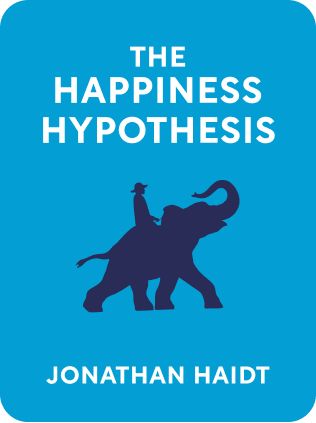

This article is an excerpt from the Shortform book guide to "The Happiness Hypothesis" by Jonathan Haidt. Shortform has the world's best summaries and analyses of books you should be reading.
Like this article? Sign up for a free trial here .
What is the “big five” personality theory? Are there personality traits we can change, or are they all set in stone?
The “big five” personality traits are neuroticism, extroversion, openness to new experiences, agreeableness, and conscientiousness and these traits are completely out of our conscious control. However, we still control our self-narratives by changing things like our goals, beliefs, and values.
Keep reading to learn more about the “big five” personality theory.
“Big Five” Personality Theory
We’ve seen that some elements of our overall level of happiness are tied to built-in pieces of our personality, like our affective style. But can adversity play a role in altering one’s personality? To answer that, we need to examine exactly what an individual’s personality is made of. Personality appears to consist of three levels:
- Basic traits
- Characteristic adaptations
- Self-narratives
The basic traits of one’s personality consist of what psychologists call the “big five” personality theory. The “big five” traits consist of neuroticism, extroversion, openness to new experiences, agreeableness, and conscientiousness. These “big five” basic traits are squarely within the elephant’s control and represent automatic mental processes. They appear to be fairly fixed and stable over time, remaining relatively unchanged regardless of events and experiences in an individual’s life.
Traits We Can Change
Other than the “Big Five” personality theory, the other levels of personality are more subject to change, especially through adversity. Characteristic adaptations comprise things like goals, beliefs, and values. They are our tools for coping with and succeeding in the world, given the constraints of our basic personality traits and the circumstances of our environment. But because our circumstances can change—often as a result of tragedy or loss—our characteristic adaptations can shift as well. We develop new ways to cope with changed circumstances, often by engaging in pursuits that will be more emotionally and spiritually fulfilling, like religion, family, and learning.
Lastly, there is life story or self-narrative. This is the rider’s domain, the conscious reality we construct for ourselves about who we are and how we got to be that way. We reimagine events to tell ourselves a consistent narrative. It’s a core part of the self and identity.
The experience of triumph over loss can play a powerful role in rewriting our self-narratives. It enables us to replace a story about our frustrated hopes or positive experiences turned sour with a more compelling story about overcoming adversity and using that experience to learn compassion and empathy for others. And in the end, this is a more fulfilling story to have about ourselves.
So even though the “big five” traits are fixed, that doesn’t mean we can’t change bits of ourselves to change our narratives.

———End of Preview———
Like what you just read? Read the rest of the world's best book summary and analysis of Jonathan Haidt's "The Happiness Hypothesis" at Shortform .
Here's what you'll find in our full The Happiness Hypothesis summary :
- How your emotions determine how satisfied you are in life
- Why you need to struggle in order to succeed
- How to create your own happiness






